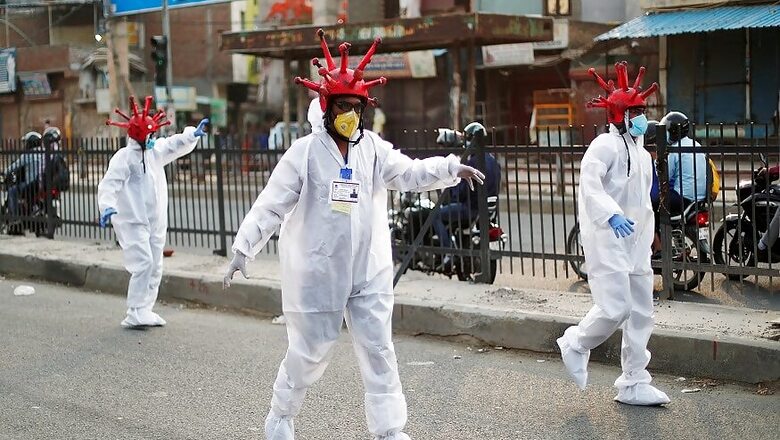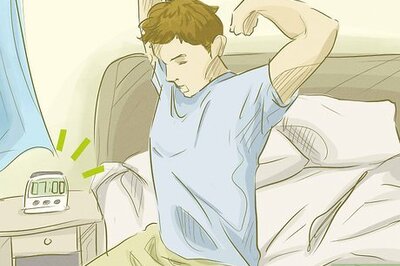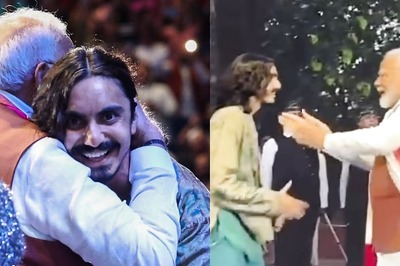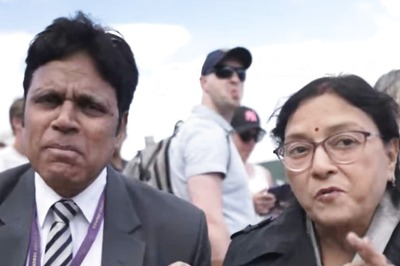
views
India’s first COVID-19 case was registered on 30 January. In under four months since, the number of positive cases in India has crossed the 100,000 mark, registering on average, over 900 new cases daily. This steady increase in the number of infections has proven that while India’s lockdown has indeed been able to delay the increase as compared to several other western countries that experienced a sharp spike since the early stages, it has been quite unsuccessful in preventing its spread and growth.
In his address to the nation on the night of 12 May 2012, the Prime Minister announced a new-look Lockdown 4 without specifying its details. These, he said, would be spelt out before 18 May, when the Lockdown 3 ends. As the decision makers work out the specifics, the factors that would be uppermost in their minds are presumably the following:
- the pandemic has battered the Indian economy – for how long can we take such economic inactivity
- the pandemic itself appears reasonably contained but the numbers that are infected are still growing – will we be overwhelmed if we open up
- the majority of Indians have till now cooperated, but are increasingly getting frustrated and agitated – would we be able to contain them if we extend the lockdown.
These are all complicated questions to answer, but the Prime Minister’s prolonged emphasis on self-reliant economic revival gave a clear indication that the nation must kick start the shut economy with renewed vigor. That points towards a highly restricted and truncated lockdown.
The key characteristic of a lockdown is that it frontloads gains and backloads losses. To make it worse, those gains are uncertain and even raise doubts whether they are gains at all. The corona lockdown is like a temporary dam to hold back flood waters. However, once the dam is dismantled, the flood waters come rushing in to inundate areas that had been kept dry. The eerie and imperceptible nature of the virus enables it to invade a human body without notice and live and depart from the body without the body exhibiting any symptoms. That makes it almost impossible to isolate and stop.
There is no doubt that nations, along with India, enforced lockdowns despite realizing that they would cause enormous pain to their citizens. In Shakespearean terms, they wanted to be cruel only to be kind. The cruelty was undoubtedly visible in all its ferocity. Only a year down the line we would know whether there were elements of kindness that accrued out of the imposition of forced inactivity and confinement. The final outcomes may even lead to the conclusion that the lockdown exercise was ruinous without giving us much in return.
There were three primary objectives behind the lockdown. The first was to break the chain of the spread of the virus so that it does not proliferate unimpeded. The second was to buy time to allow the country’s health system to prepare itself for the oncoming onslaught of infected people. The third was to reengineer human behavior and prepare men, women and children to get used to washing, masking and distancing.
From the ‘COVID-19’ perspective, in very essential terms, there are two sides to the coin of life. Firstly, one must remain alive to exist. Secondly, one must have the means to keep body and soul together. Normally, there is no problem in both co-happening. COVID-19, however, throws humankind into a difficult dilemma. Social and economic interactions accelerate the spread of the virus and threaten to cause large-scale deaths. However, inactivity and isolation economically dry up the ability of people to survive. In the long run, especially for the poorest, the choice is possible death by disease or certain death through starvation.
The million-dollar question, therefore, is to determine how long and how much of isolation one can live with and how much of activity one can risk. An obvious preliminary answer is that isolation cannot be for very long; for the longer it gets, the more emaciated the nation and its citizens become. Secondly, it is almost certain that the ‘quarantined’ virus would let itself loose as soon as the lockdown is lifted. It is adept at playing the waiting game. Clearly, lockdowns don’t vanquish the virus. Now we have sufficient evidence of this. Wuhan, the global epicenter of the outbreak, reported on 11 May 2020 its first cluster of coronavirus infections since a lockdown on the city was lifted a month ago, stoking concerns of a wider resurgence. South Korea, a country that was cited as the benchmark on how to deal with the virus and largely succeeded in quelling the initial spread is back on the defensive. It has ordered the closure of its bars and clubs as the country reported its biggest one-day increase in new infections in a month (10 May 2020). India’s lockdown is neither as brutally efficient as China’s nor is its citizenry as civic-trained as in South Korea. There is no reason, therefore, to believe that results in India post lockdown would be any different.
On 23 March 2020, a day before Lockdown 1.0 was imposed, India had reported 415 COVID-19 cases and 10 deaths. By the end of March, the cases and deaths stood at 1,251 and 32 respectively. The figures had climbed to 33,062 and 1,079 by the end of April. As of 12 May 2020, a few days before Lockdown 3.0 was to end, the country had 74,079 cases and 2,410 deaths. This means that by the end of March (7 days) the rise of cases and deaths climbed 3 times; by the end of April (30 days) they rose 80 and 108 times and by 12 May, the numbers of the infected have risen 178 times and deaths 241 times. It would be a conservative estimate to predict that by the end of June, the cases and deaths would stand at around 5.5 lakhs and 18,000 respectively, given the current levels of lockdown continue. If the zoning definitions adopted by Government of India were to remain constant, we would have a rising incidence of containment zones and red zones and reducing numbers of orange and green zones. In other words, India would be in a perpetual lockdown, geographically spreading in its severity.
In the latest round of discussions, some Chief Ministers wanted the lockdown to continue. However, it is advisable that one considers the huge negatives of a lockdown. There is a considerable body of scientific opinion in the world that believes that “there is very little we can do to prevent this spread: a lockdown might delay severe cases for a while, but once restrictions are eased, cases will reappear”. A more courageous view propounded in the reputed medical journal Lancet believes that “when we count the number of deaths from COVID-19 in each country in 1 year from now, the figures will be similar, regardless of measures taken”. This view holds that “our most important task is not to stop spread, which is all but futile, but to concentrate on giving the unfortunate victims optimal care”.
It may be difficult in a country like India to not be emotional and sensitive but rather be rational and logical in declaring the total end of a lockdown. However, both economic strain and the distress of the poorest have already forced industrial and business sectors to open in parts of the country and trains to run to ferry migrants. In the light of the negatives of the lockdown and the governance fatigue setting in among those asked to enforce lockdown, along with rising numbers among them getting infected, it appears logical to move towards normalcy quickly rather than slowly.
One would do well, while working out the Lockdown 4 details, to go back to the advice given by Mahatma Gandhi. He counselled, “I will give you a talisman. Whenever you are in doubt, or when the self becomes too much with you, apply the following test. Recall the face of the poorest and the weakest man whom you may have seen, and ask yourself, if the step you contemplate is going to be of any use to him”. Surely, the lockdown, as we have observed has little use for him.
This article first appeared in ORF.




















Comments
0 comment